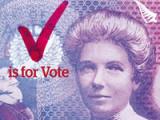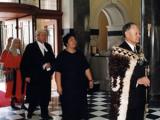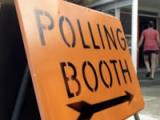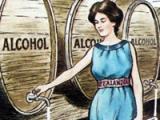Twenty-nine-year-old Moana Mackey entered the House of Representatives as a Labour Party list MP. She joined her mother, Janet Mackey, who had been a Labour MP since 1993. They were the first mother and daughter to serve together in New Zealand’s Parliament.
Women In Politics
Events In History
Georgina Beyer won the Wairarapa electorate for Labour in 1999 by a margin of 3033 votes.
Ann Hercus became New Zealand’s first Minister of Women’s Affairs following the election of the fourth Labour government.
Whetu Tirikātene-Sullivan became the first female Māori Cabinet minister when she was sworn in as Minister of Tourism in Norman Kirk’s third Labour government
The legislation aimed to end the gender pay gap in the private sector, following earlier legislation which addressed the pay gap for the public service.
Iriaka Rātana was elected as New Zealand’s first female Māori MP.
When mabel Howard was appointed minister of health and minister in charge of child welfare, she became the first woman to serve as a Cabinet minister in New Zealand.
The Labour Party’s Elizabeth McCombs became New Zealand’s first female Member of Parliament, winning a by-election in the Lyttelton seat caused by the death of her husband, James McCombs.
The passing of the Women’s Parliamentary Rights Act enabled women to stand for election to the House of Representatives, 26 years after they won the right to vote.
By becoming mayor of Onehunga, Auckland, Elizabeth Yates struck another blow for women’s rights in local-body polls held the day after the first general election in which women could vote.
New Zealand women went to the polls for the first time, just 10 weeks after the governor signed the Electoral Act 1893, making this country the first in in which women had the right to vote in parliamentary elections.
When the governor, Lord Glasgow, signed a new Electoral Act into law, New Zealand became the first self-governing country in the world in which women had the right to vote in parliamentary elections.
The monster suffrage petition contained the signatures of more than 25,000 women. A dozen other, smaller petitions were also submitted around the same time.
These petitions, signed by 9000 women, contributed to the introduction of a Female Suffrage Bill in Parliament. This received majority support in the House of Representatives but was defeated in the Legislative Council.
The first women’s trade union in New Zealand emerged in the late 19th century in response to poor working conditions in the clothing industry.
Articles
Women and the vote

On 19 September 1893 the governor, Lord Glasgow, signed a new Electoral Act into law. As a result of this landmark legislation, New Zealand became the first self-governing country in the world in which all women had the right to vote in parliamentary elections. Read the full article
Page 1 - New Zealand women and the vote
On 19 September 1893 the governor, Lord Glasgow, signed a new Electoral Act into law. As a result of this landmark legislation, New Zealand became the first self-governing country
Page 2 - Brief history
A history of the movement that won New Zealand women the vote in
Page 3 - Women's suffrage milestones
Women's suffrage milestones from 1869 to
Page 4 - The National Council of Women
Three years after the vote was won in 1893, a convention of representatives of 11 women's groups from throughout New Zealand resolved itself into the National Council of
Page 5 - World suffrage timeline
Although a number of other territories enfranchised women before 1893, New Zealand can justly claim to be the first self-governing country to grant the vote to all adult
Page 6 - Women's suffrage petition
Search the women's suffrage
Page 7 - About the suffrage petition
Information about the suffrage petition and searchable
Page 8 - Further information
Find out more about women and the vote in New
Parliament's people

Today there are usually between 120 and 123 MPs in New Zealand's Parliament, which is a far cry from the 37 who met for the first time in Auckland in 1854. Read the full article
Page 1 - Parliament's people
Today there are usually between 120 and 123 MPs in New Zealand's Parliament, which is a far cry from the 37 who met for the first time in Auckland in
Page 2 - Women MPs
For much of its first century, Parliament was a bastion of male culture. Nowadays women make up 30% of
The road to MMP
In 1993 New Zealanders voted to replace their traditional first past the post (FPP) voting system with mixed member proportional representation (MMP). Eighteen years on, as Kiwis voted in a new electoral referendum, we explore how and why that dramatic reform came about. Read the full article
Page 5 - 1996 and beyond - the road to MMP
The three years following the 1993 referendum, before the first MMP election in 1996, were ones of transition and
Election Days

When New Zealanders go to the polls on 26 November 2011, they will continue a 158-year-old tradition of parliamentary democracy in this country. Politics may have changed beyond recognition since 1853, but the cut and thrust of the campaign trail, the power of advertising, and the drama of polling day remain as relevant as ever. Read the full article
Page 3 - Cleaning up elections
The New Zealand Parliament was alarmed by reports of electoral abuses in Auckland in the 1850s. It decided that electoral laws needed to be tightened, and in 1858 passed a series
Temperance movement

Temperance was one of the most divisive social issues in late-19th and early-20th century New Zealand. Social reformers who argued that alcohol fuelled poverty, ill health, crime and immorality nearly achieved national prohibition in a series of hotly contested referendums. Read the full article
Page 2 - Beginnings
Dawn of the New Zealand temperance movement,
Premiers and Prime Ministers
From Henry Sewell in 1856 to Chris Hipkins in 2023, New Zealand has had 41 prime ministers and premiers. Read biographies of the men and women who have held the top job, discover more about the role's political origins, and explore fascinating prime ministerial facts and trivia. Read the full article
Page 1 - Premiers and Prime Ministers
From Henry Sewell in 1856 to Chris Hipkins in 2023, New Zealand has had 41 prime ministers and premiers. Read biographies of the men and women who have held the top job, discover






























































